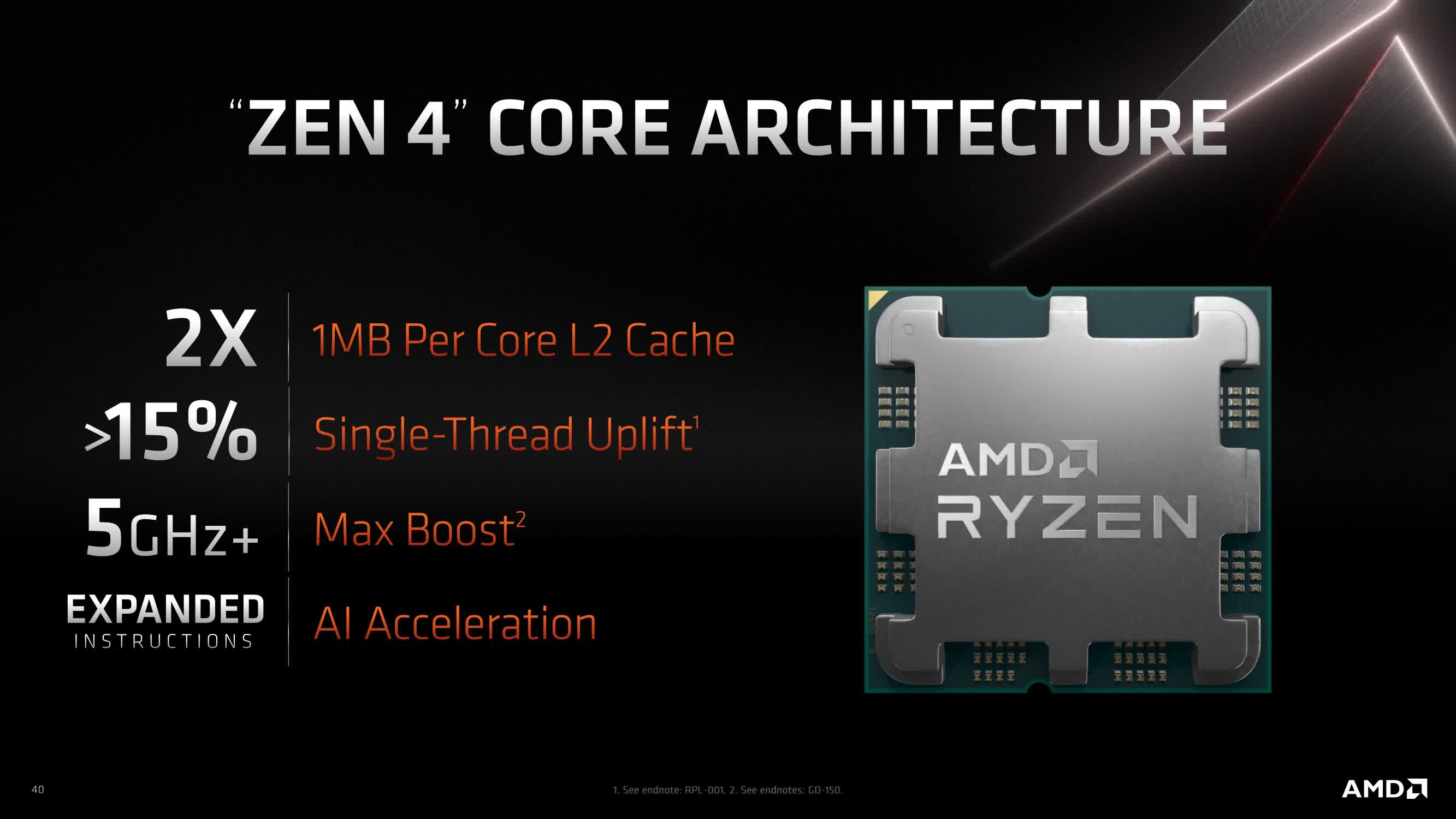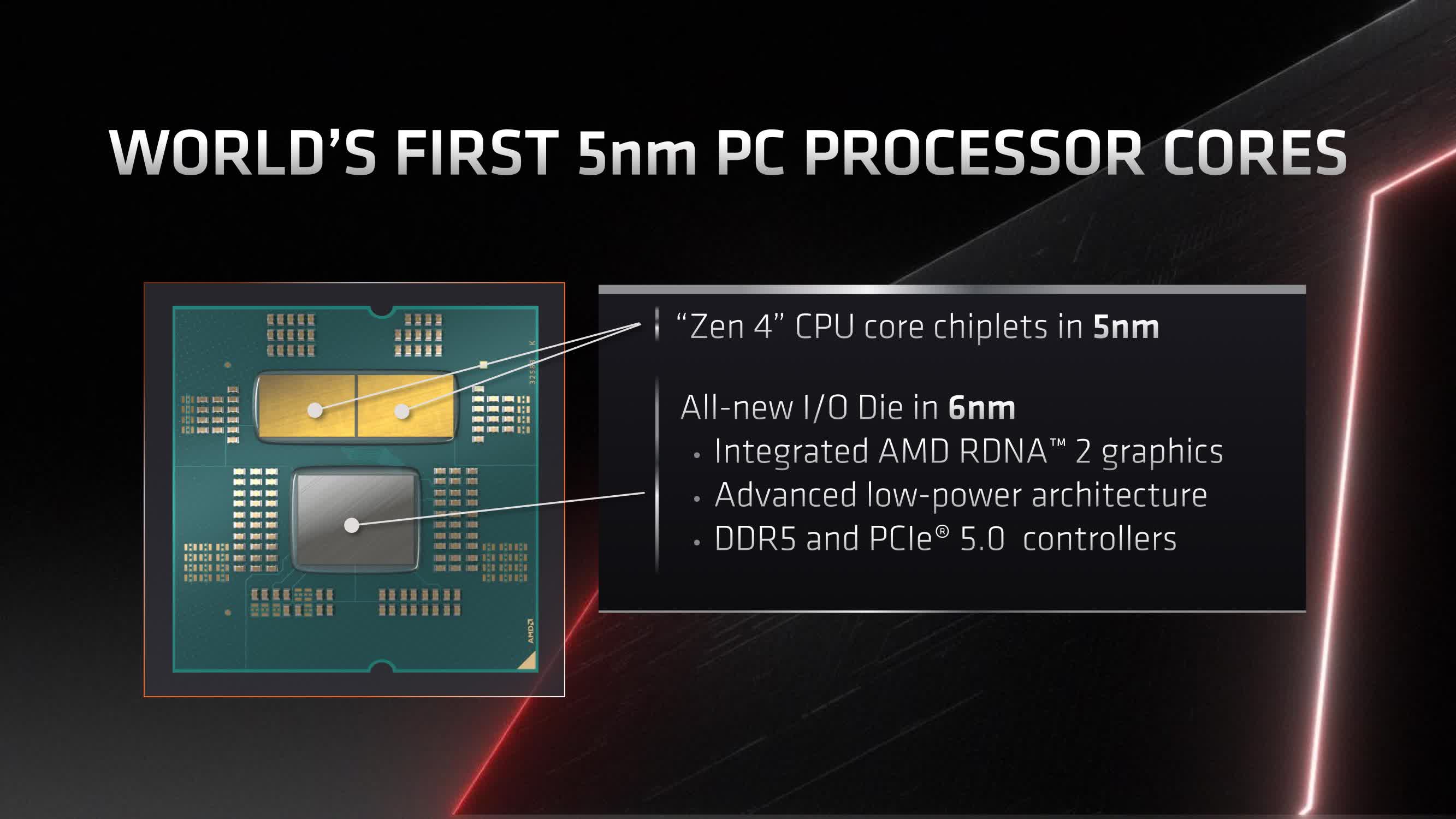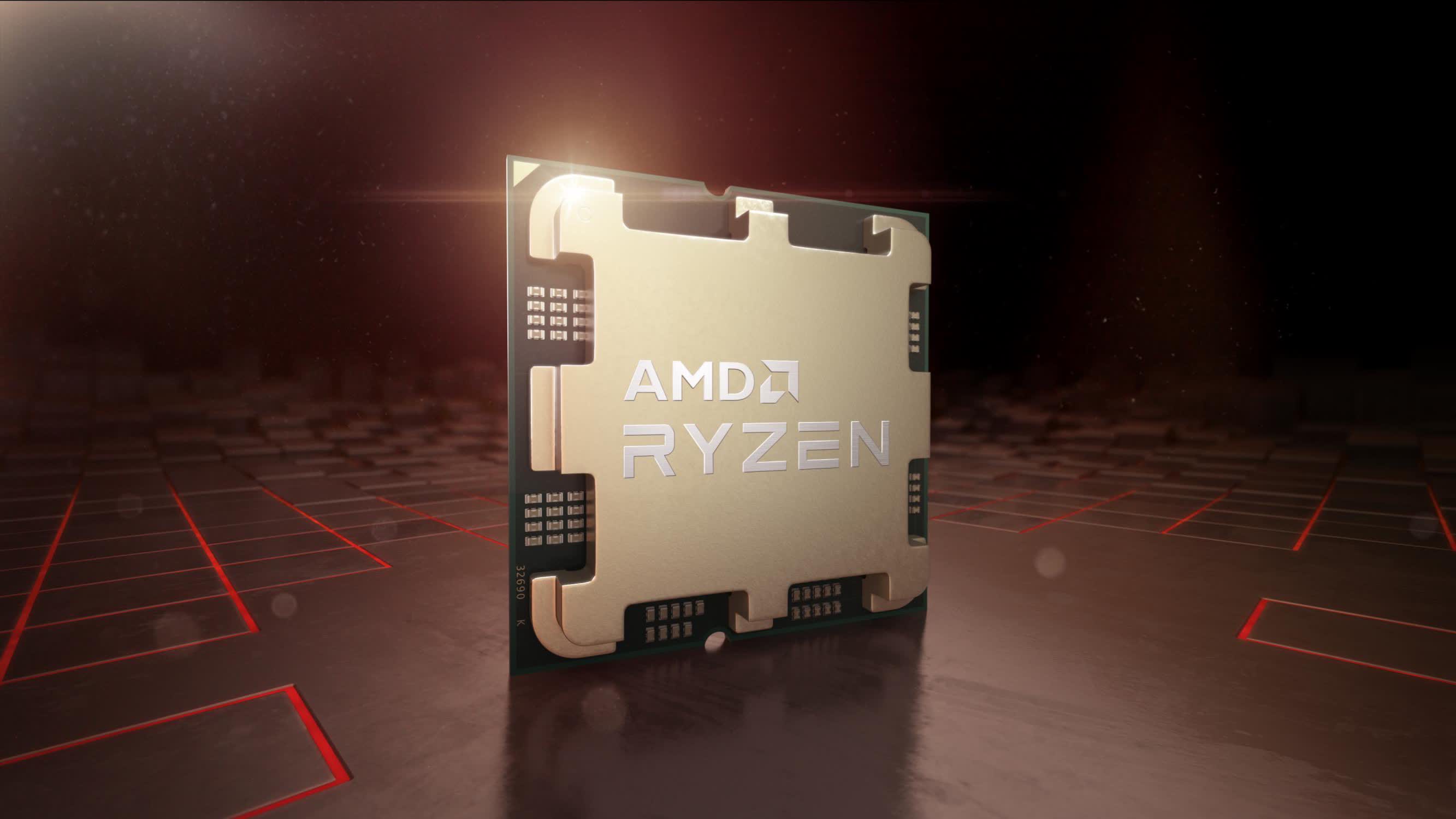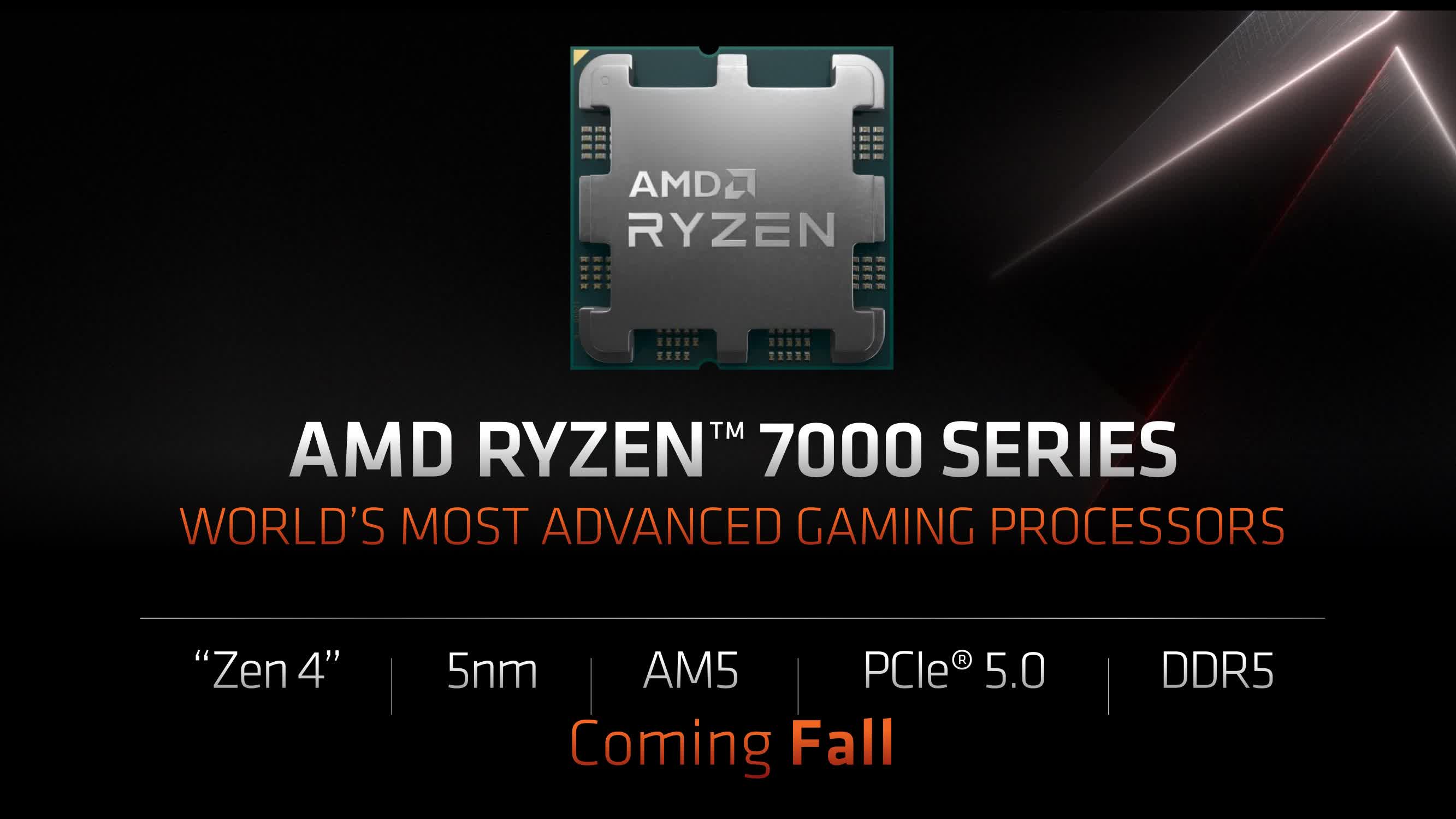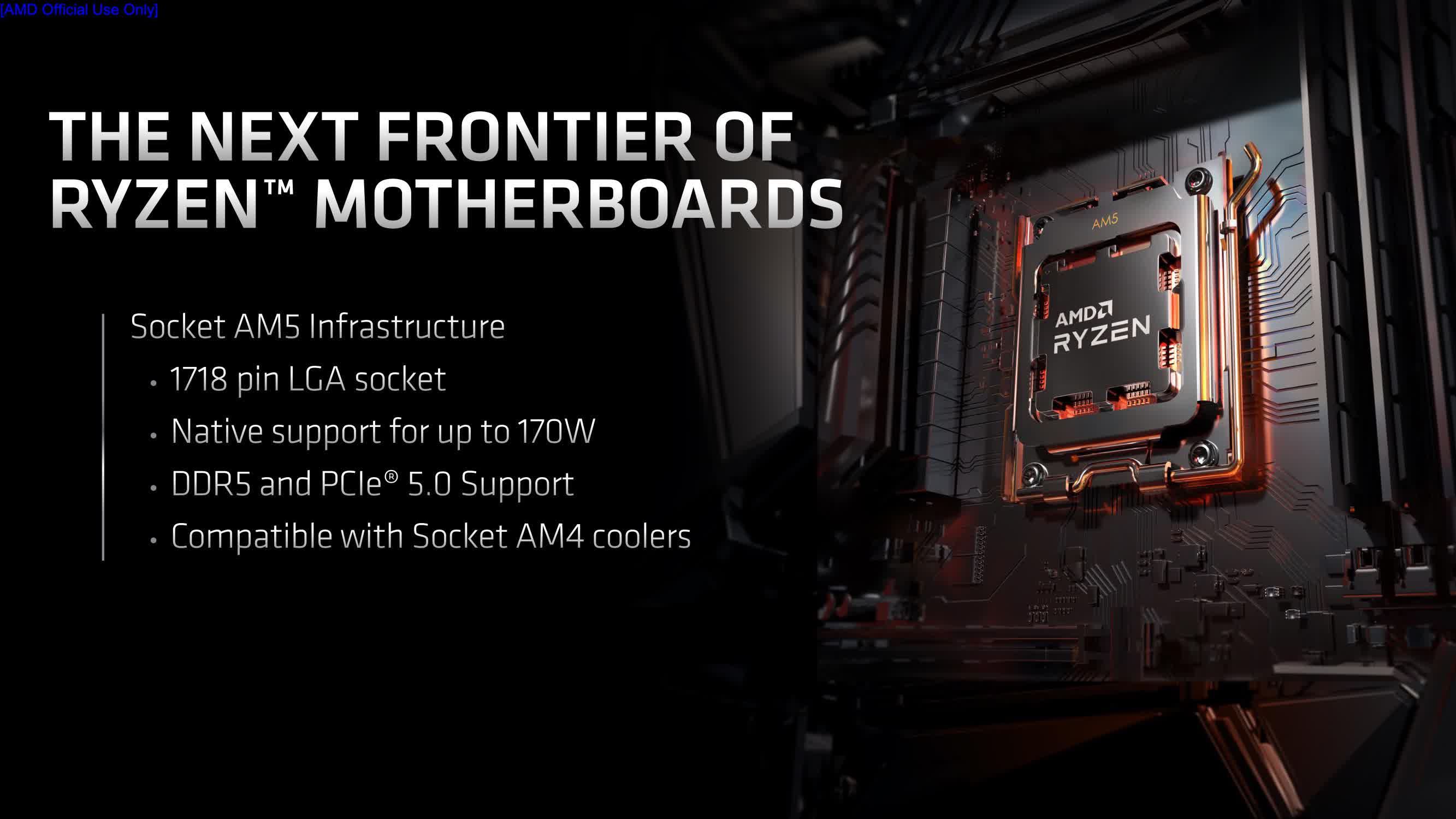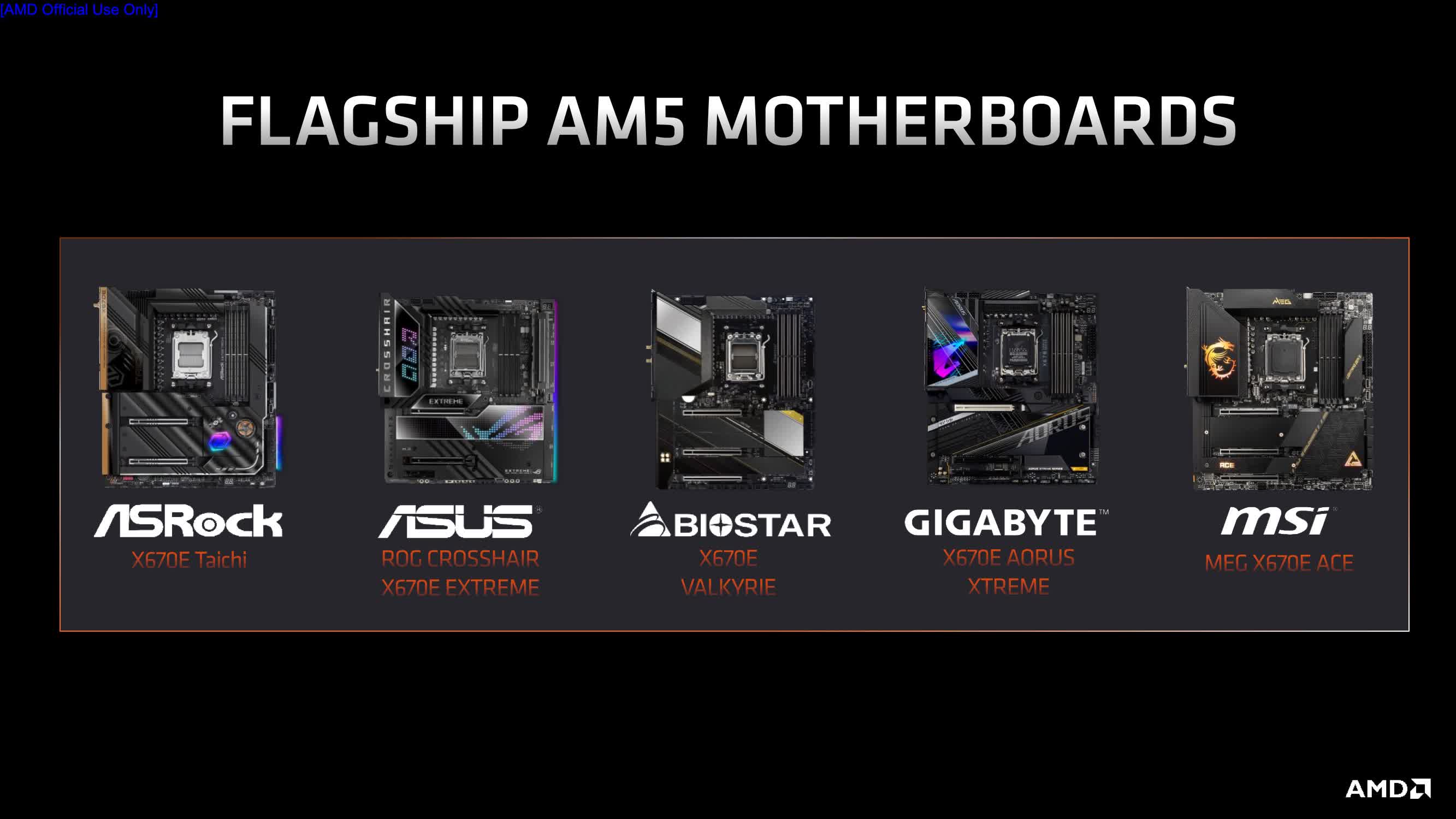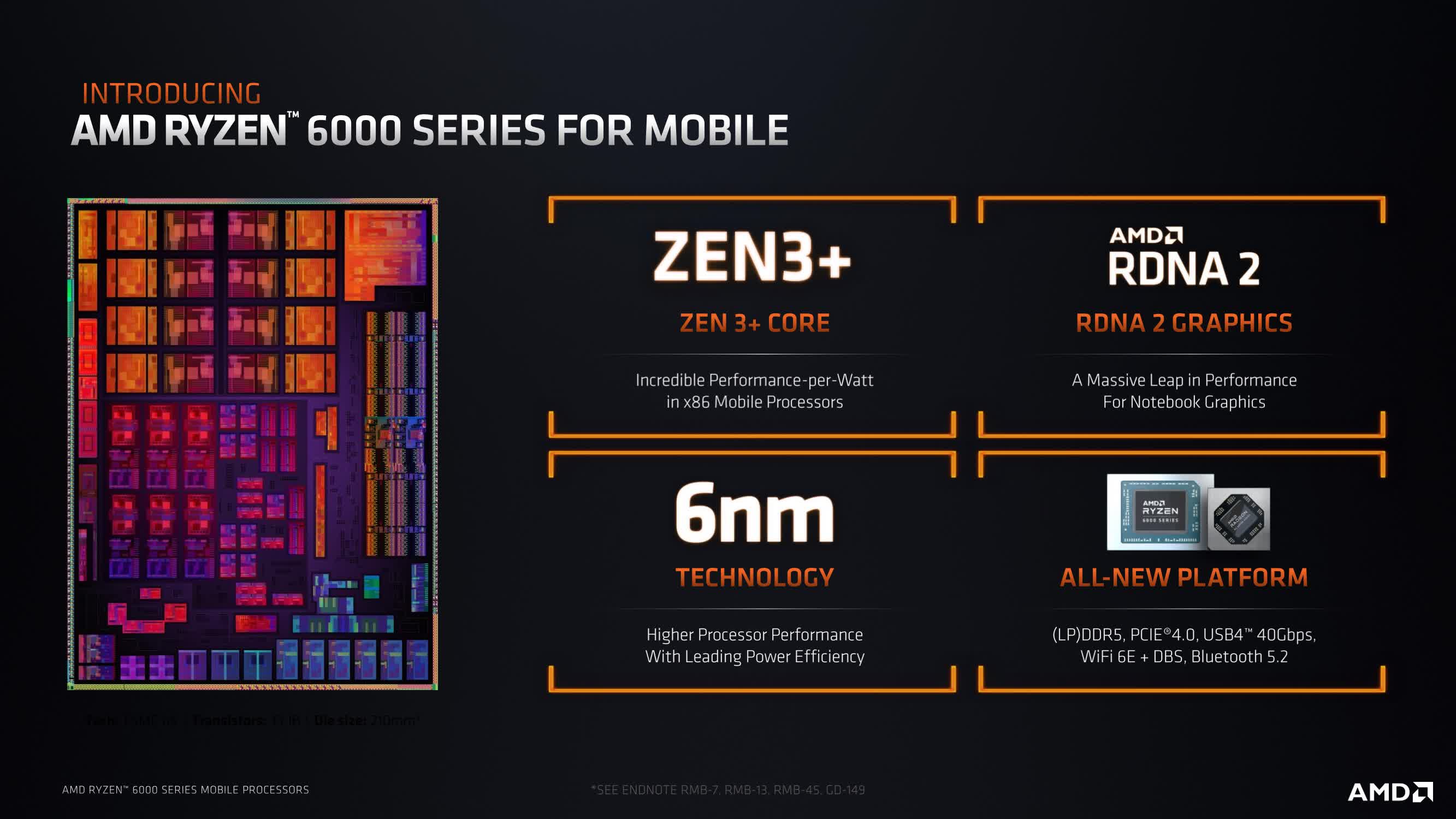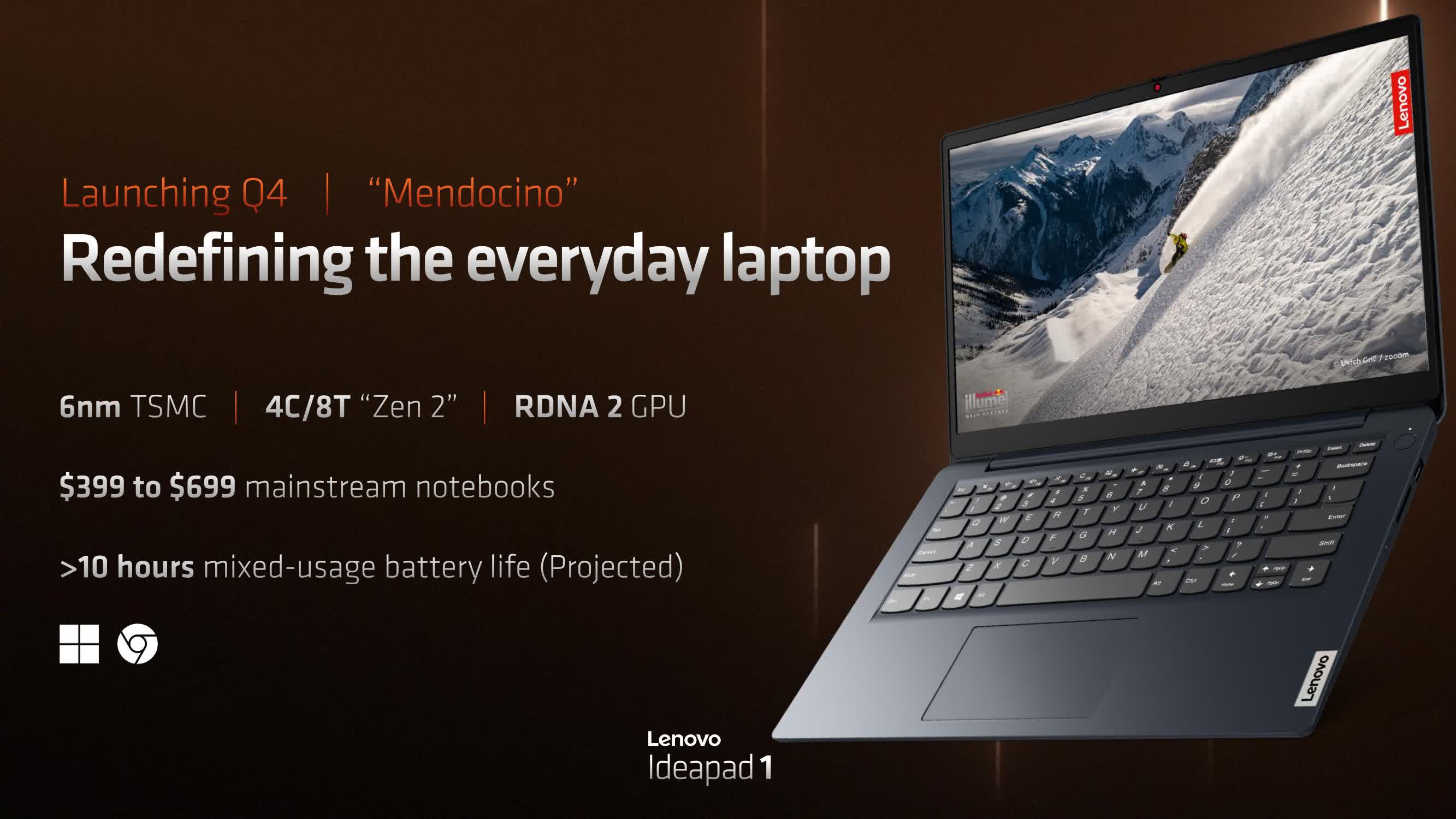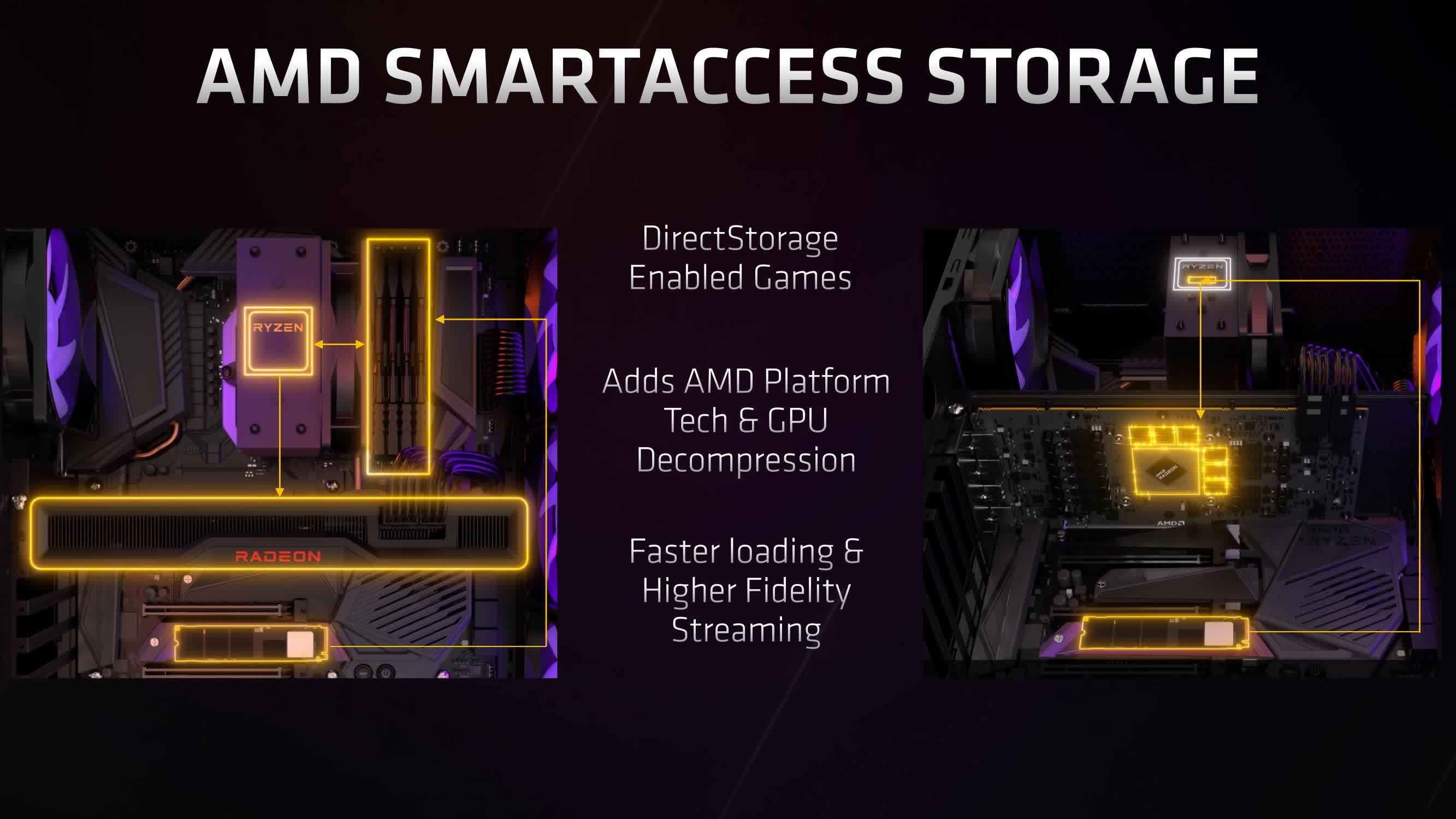Forward-looking: AMD delivered their Computex 2022 keynote today and we have all the details on what was shown off. There was a semi-announcement of Zen 4 processor technology, and we got concrete information about what AMD is bringing with their next generation architecture. So let's dive straight into Zen 4 and the Ryzen 7000 series.
As expected, Zen 4 is AMD's new CPU architecture built using TSMC 5nm technology. The new CPUs will utilize a new AM5 socket that supports lots of new features. We'll discuss the 600 series chipsets in a bit, which will be coming to market to support the new CPUs.
Some of the the key information released today involves the architectural advancements AMD is making with Zen 4. This is not a full architecture breakdown yet, but AMD has revealed that Zen 4 will have twice the L2 cache of Zen 3 per core, up to 1MB per core. There's also an AI acceleration hardware block in the CPU core and AI-specific instructions to keep Zen up to date with the demands of modern software that is increasingly moving towards AI processing.
As for performance, AMD is teasing a 5 GHz+ maximum boost, and a greater than 15% single-thread performance uplift for the new CPUs.
When it comes to frequency, Ryzen 7000 processors won't just be capable of 5.0 GHz. AMD showed a demo of a Zen 4 Ryzen 7000 processor with 16 cores running Ghostwire Tokyo at up to 5.5 GHz boost frequency as shown via an in-game overlay. The number was fluctuating a bit, from around 5.3 to 5.5 GHz, but clearly clocks were well above 5 GHz.
This is unlikely to be an all-core frequency as Ghostwire Tokyo does not smash a 16 core CPU by any stretch. It's also unclear how loaded even a single thread was when the frequency was recorded. After all, CPUs sometimes have to drop their frequency even on a single core if the workload is particularly heavy, so 5.5 GHz might not be what we see in a Cinebench single-thread run, but it's clearly a much higher clock speed than current Zen 3 processors run at.
The single-thread performance uplift claim of greater than 15 percent is not an IPC claim – it's a single thread performance claim. AMD specifically told us in a pre-briefing this was a combination of IPC and frequency to hit that number. With Zen 4 clearly able to clock higher, the actual IPC gains will be less than this figure.
Secondly, we know how they measured the performance uplift. According to AMD's footnotes, it was a comparison between a 16-core pre-production Zen 4 CPU and a Ryzen 9 5950X in Cinebench R23 single-thread, with the Zen 4 CPU being equipped with 2x16GB of DDR5-6000 CL30 memory. This is not a single-thread comparison to the 5800X3D, though in many applications the extra cache doesn't actually assist with performance and instead takes things backwards.
The downside we guess is that a 15% performance increase in Cinebench R23 single-thread will not be enough for Zen 4 to outperform Alder Lake in this workload. In our latest testing, the Intel Core i9-12900KS is 33% faster than the Ryzen 9 5950X in Cinebench R23 single-thread, and the 12900K is 26% faster using high performance DDR5 memory.
AMD does say the uplift for Zen 4 will be greater than 15%, but it would have to be a lot greater than 15% to take the lead, let alone fend off whatever new CPUs Intel will have later this year. Surely if the uplift was more than 20% as an example, would AMD have said so? In that case, an uplift of say, between 15 and 19 percent would be pretty disappointing.
Also of importance is that Cinebench R23 is a strong example for Intel. In other tests like Adobe Photoshop and Factorio, the 12900K family is in the low 20% faster range. Still higher than 15% though; it would take roughly a 20 to 25 percent uplift just to match the CPUs Intel launched at the end of last year, which by the time Zen 4 hits the market could be 10 to 12 months old. So I guess I have mixed feelings about this greater than 15% performance claim AMD have made today, I don't think that number is especially impressive.
The counterpoint to this is that Ryzen 7000 processors will feature up to 16 Zen 4 cores, compared to just 8 P-cores for the 12900K. And yes, 16 cores is the maximum, AMD confirmed that the design features two chiplets each with up to eight CPU cores, no 24 core chip here. With 16 full performance cores, AMD showed a Ryzen 7000 CPU comfortably beating the 12900K in a multi-threaded Blender render: 31% faster for this particular comparison.
But like all demos, there are things to be aware of. In our 12900K review, we found that the 5950X was already 20 percent faster than the 12900K in Blender, suggesting this is a very favorable benchmark for AMD. The test workload we use is different to that shown in AMD's presentation, so comparing this 31% gain to our previous 20% result would be an inaccurate comparison. But it does temper the expectations for gains between the 5950X and a Zen 4 16-core CPU to some degree, though overall multi-core performance vs Intel should be quite good.
Those were the main performance comparisons AMD were willing to show today, and no real gaming numbers either, thus it's unclear where Zen 4 will sit compared to the 5800X3D which already delivered 15% gains over other Zen 3 parts thanks to V-Cache. We have no idea how Zen 4 will go in gaming at this stage, but it may not be all that favorable compared to the 5800X3D until V-Cache gets implemented, if that's a thing for this upcoming generation.
As for the CPU design, AMD are sticking with the chiplet + I/O die layout, but all elements have been upgraded. Of course, we have the new 5nm CPU core chiplets but the I/O die has received a huge upgrade, too, shifting from GlobalFoundries 12nm to TSMC 6nm. This lowers power consumption, but AMD have also crammed in more features, including DDR5 and PCIe 5.0 support.
... all Zen 4 Ryzen 7000 CPUs will have built-in graphics
On top of this, Zen 4 desktop CPUs will feature integrated RDNA 2 graphics for the first time. No more differentiation between CPUs and APUs with different designs, chiplet vs monolithic, all Zen 4 Ryzen 7000 CPUs will have built-in graphics. This was only mentioned briefly, so we have yet to learn more about how this iGPU will perform or its configuration.
When will Zen 4 CPUs launch?
Sometime between September and November, which of course is quite a wide launch window, and if these chips launch as late as November, it would be two years since the debut of the first Zen 3 processors. It looks like AMD will also be launching within a few months of next-gen Intel CPUs, the 13th-gen Raptor Lake series, so AMD would want to establish a decent performance lead over Alder Lake to prepare for next-gen Intel parts.

AM5 platform and 600 series motherboards
The other main announcements surrounding desktop CPUs was AM5. Obviously this socket and the supporting boards are designed to support DDR5 and PCIe 5.0, AMD has told us that DDR4 will not be supported at all. However, AM4 coolers will be compatible with the new boards, saving upgraders some cash if they already have a decent AM4 cooler.
The socket also moves to an LGA design which AMD says is better suited to the signal integrity required for connectivity like DDR5 and PCIe 5.0.
The release notes also show support for CPUs up to 170W TDPs – current-gen desktop parts top out at 105W TDP – so if that sort of chip is deployed for Zen 4, that's quite an increase on what we have on top of likely performance per watt gains from the new architecture and shift to 5nm. However the TDP is typically a poor reflection of actual power consumption.
AM5 will support 24 lanes of PCIe 5.0
The AM5 platform will support 24 lanes of PCIe 5.0, the most of any consumer desktop platform right now. Alder Lake, for example, only supports 16 lanes alongside 4 lanes of PCIe 4.0. With Zen 4 and AM5 you'll have the capabilities of running PCIe 5.0 x16 GPUs and PCIe 5.0 NVMe SSDs at the same time, though the practical benefits to this will likely be pretty minimal for most people at least for the next few years.
In addition to this, AM5 will support up to 14 20 Gbps USB ports, but no mention of USB4. There will also be Wi-Fi 6E support and support for up to 4 display outputs, which is critical as AMD's CPUs moving forward will include integrated graphics. These boards should support HDMI 2.1 and DisplayPort 2 in line with the RDNA2 graphics capabilities of the CPUs.
As for motherboards, we're getting limited details on the 600 series line-up and their capabilities. The main differentiating factor outside the usual stuff like VRM quality and I/O ports is in PCIe 5.0 connectivity. X670 Extreme motherboards, or X670E, will have PCIe 5.0 "everywhere," although AMD clarified this will mean two x16 slots with PCIe 5.0 and one M.2 slot. For regular X670 users will get PCIe 5.0 for the main M.2 and optionally for the x16 graphics slot as well depending on the board, then for B650 it'll be PCIe 5.0 to at least the main M.2 slot with PCIe 4.0 elsewhere, such as for graphics.
One of the big question marks around AM5 is future support
AM4 was a massive success because AMD promised to support multiple generations of CPUs into the future, and delivered on that promise instead of replacing the socket every two generations like Intel. There were a few hiccups along the way that required community pushback, like getting Zen 3 support on B450 boards, but overall it was a big success.
Will AMD offer the same for AM5? There was a lot of talk about designing a socket and platform for the future, but no firm commitment to supporting a number of generations. AMD did not provide more specifics for now, but this is something we'll be pushing for and asking them as we get closer to launch.
Personally, I think the strength of AM4 was a huge competitive advantage for AMD compared to Intel and the work they put in initially allowed them to gain significant sales in the back end of AM4's life with Zen 3, despite Intel having the overall faster product once Alder Lake launched. They absolutely should be doing this again with AM5.
Mobile Ryzen 6000
The other half of the keynote focused on laptop products. AMD had already announced their Ryzen 6000 lineup, so this was more or less the same stuff we already covered a few weeks back. There were some performance details around Ryzen 6000 chips, but we're hoping to have a full performance breakdown of the Ryzen 7 6800U for you soon as we do have that processor on hand for testing in an Asus laptop.
However there were some new announcements. One was for a new APU codenamed Mendocino that's coming in Q4 of this year, which brings a 4 core, 8 thread Zen 2 CPU and RDNA2 graphics to entry-level and mainstream notebooks in the $400 to $600 range.
It's built on TSMC 6nm and the die AMD showed off during their presentation was physically different to regular Ryzen 6000 APUs, it's a lot smaller, so it appears as though this chip is designed specifically for efficiency and low cost, high volume products where saving on die size is important.
AMD also announced SmartAccess Storage, which appears to be their implementation of Microsoft's DirectStorage APIs. In DirectStorage-enabled games, SmartAccess Storage will use platform features such as SmartAccess Memory and GPU asset decompression to provide the benefits of DirectStorage, like faster loading times and better asset streaming. Not much else was detailed and we can expect to learn more in the coming months.
Why does AMD need SmartAccess when DirectStorage exists? Well, think of this like Nvidia's RTX IO announcement from 2020. DirectStorage is just an API, the hardware in your system needs some method to take the API calls and apply what is being asked. Both RTX IO and SmartAccess Storage appear to be Nvidia and AMD's respective solutions, leveraging the features of their hardware. These features will become key as DirectStorage games start launching.
That was it for AMD's Computex 2022 announcements, mostly setting up the scenario for launching Zen 4 and AM5 later this year. Being able to hit up to 5.5 GHz looks promising, however the stated numbers around a single-thread performance uplift are a bit disappointing considering what AMD needs to do to outperform Intel.
AM5 seems like a solid platform though, with PCIe 5.0 support extending down to B650 motherboards, and the introduction of a new "Extreme" series for flagship X670 boards. However, it remains to be seen how long AM5 will be supported. Surely we'll find out as we get closer to the launch window which begins this September.
